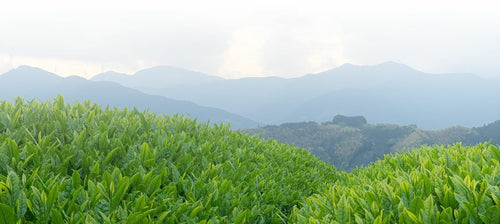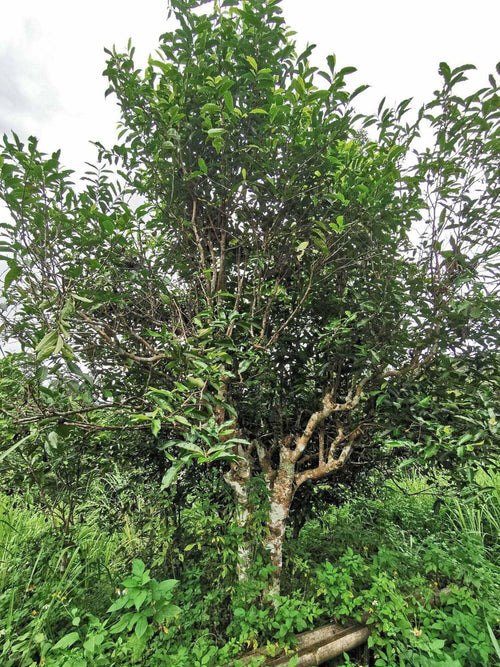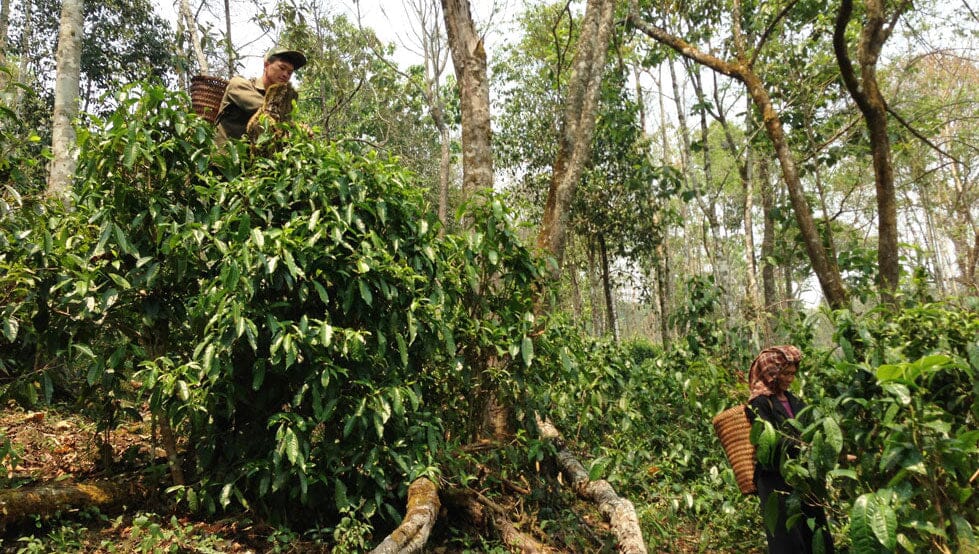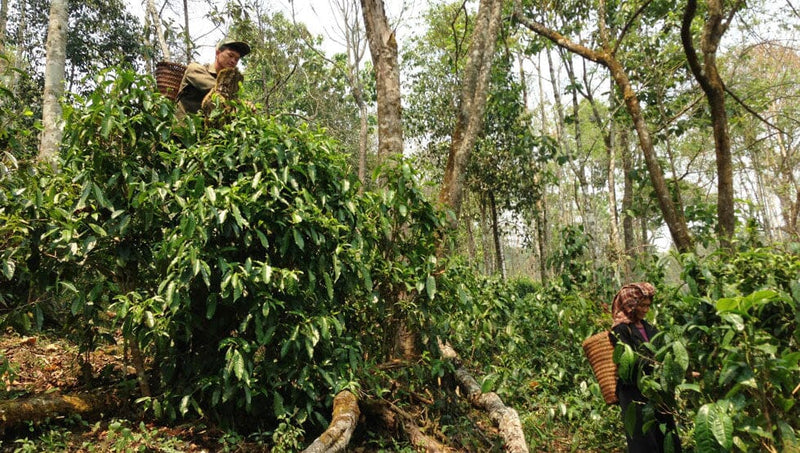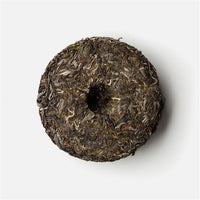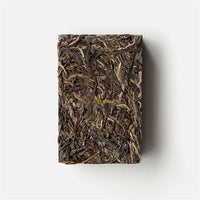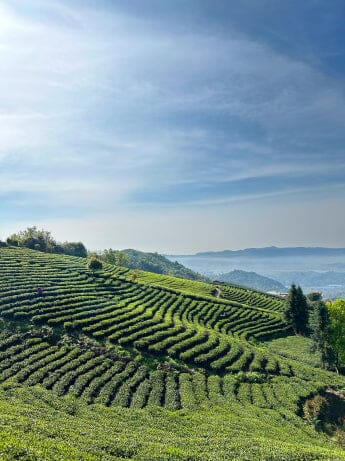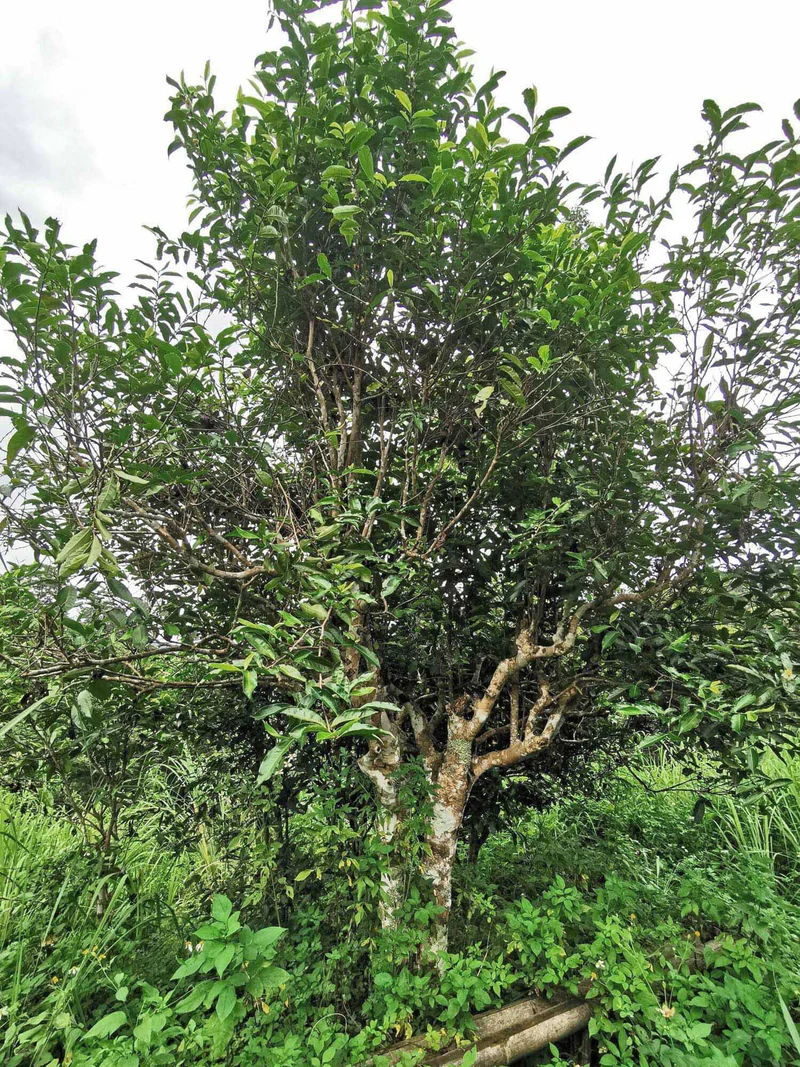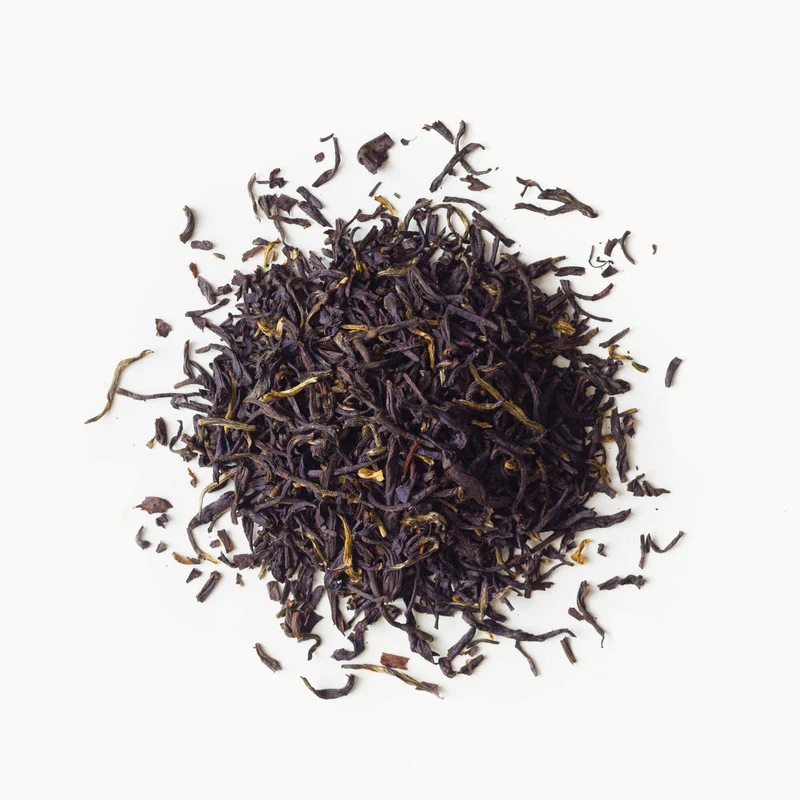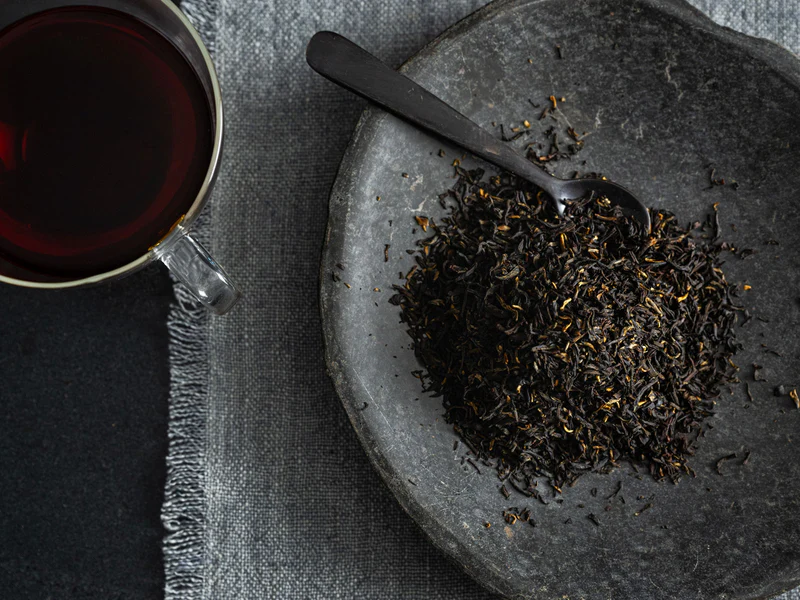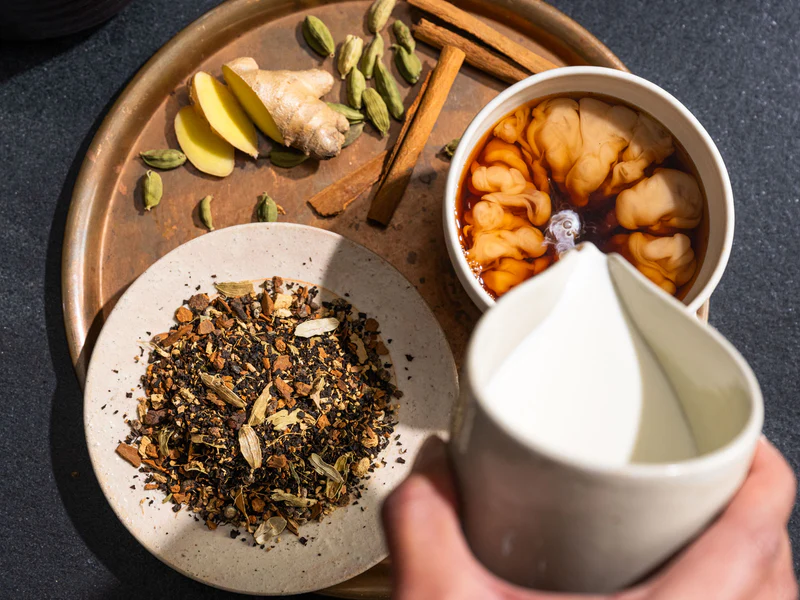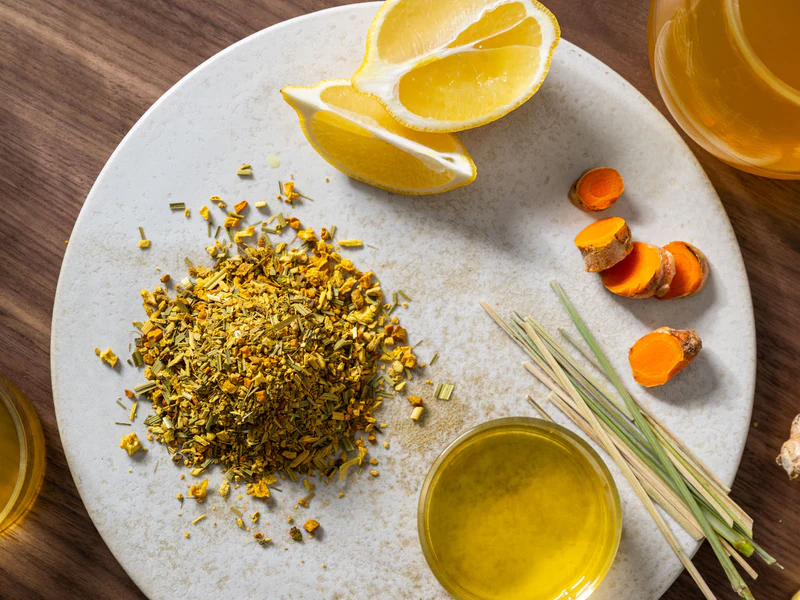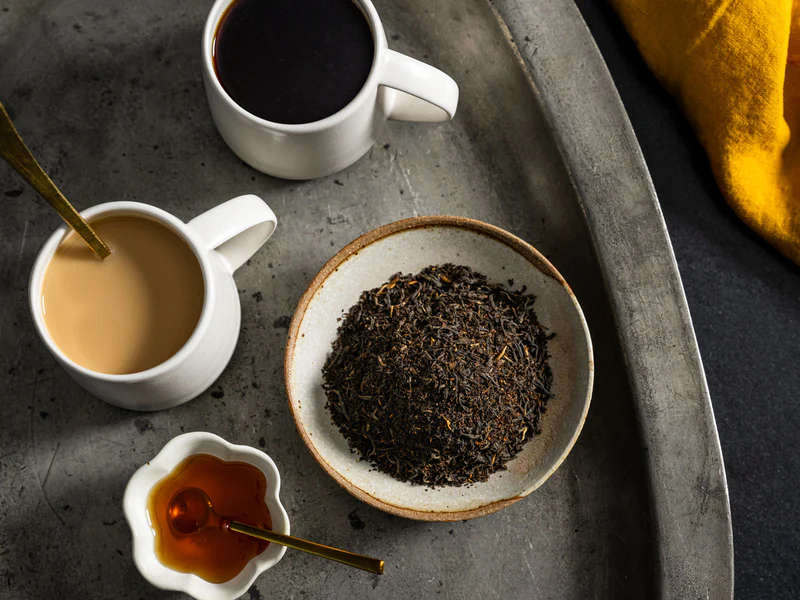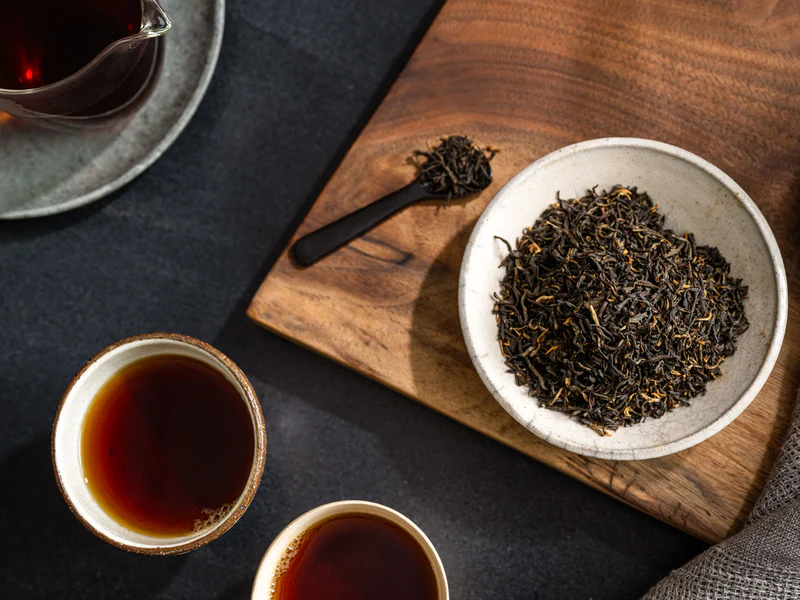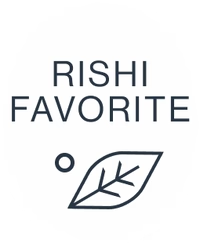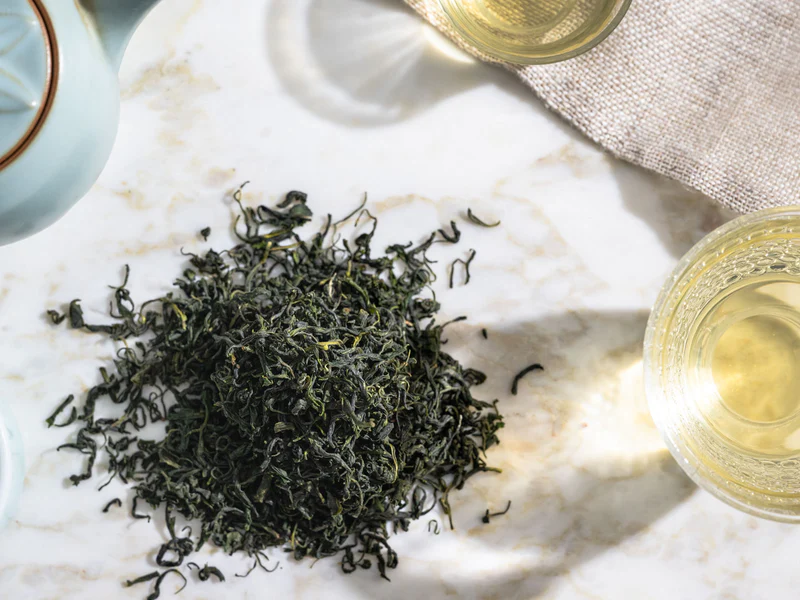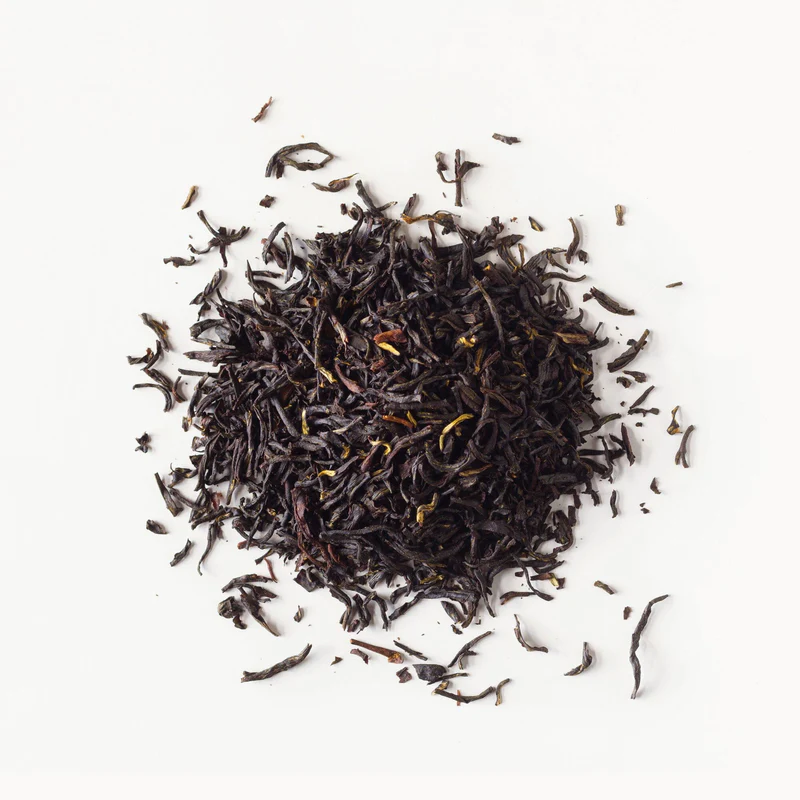

When we first traveled to Northern Laos in 2003 we encountered miles and miles of incredibly tall, old tea trees in the forests surrounding the Hmong village communities. Since then, expert arborists have assisted in the planed coppicing of the old trees so villagers could more easily harvest the new growth tea shoots and expand their forest tea income. In 2007, and again in 2012, there were many advancements in the development of sustainable tea forest yields from additional coppicing and planting of heirloom ancient tea seeds that led to new growth and more gardens.
The founder and president of Rishi Tea & Botanicals met with academic Dr. Thiphavong Boupha in 2012 while working together with a group of experts tasting and assessing the wild and ancient cultivated tea resources of Northern Laos with various NGOs and the NAFRI (National Agriculture and Forestry Research Institute in Laos). Thiphavong and Joshua made a connection when they worked together in Laos and developed a lasting friendship over the years. Today Thiphavong and Joshua are working together to bring exquisite and rare Laos forest teas to Rishi Tea &Botanicals.
Thiphavong and Joshua have always been passionate about Laos tea and they want to share the original terroir flavor of the forest cultivated ancient tea (Gushu) from Laos, shipped direct from Laos, unblended and original.
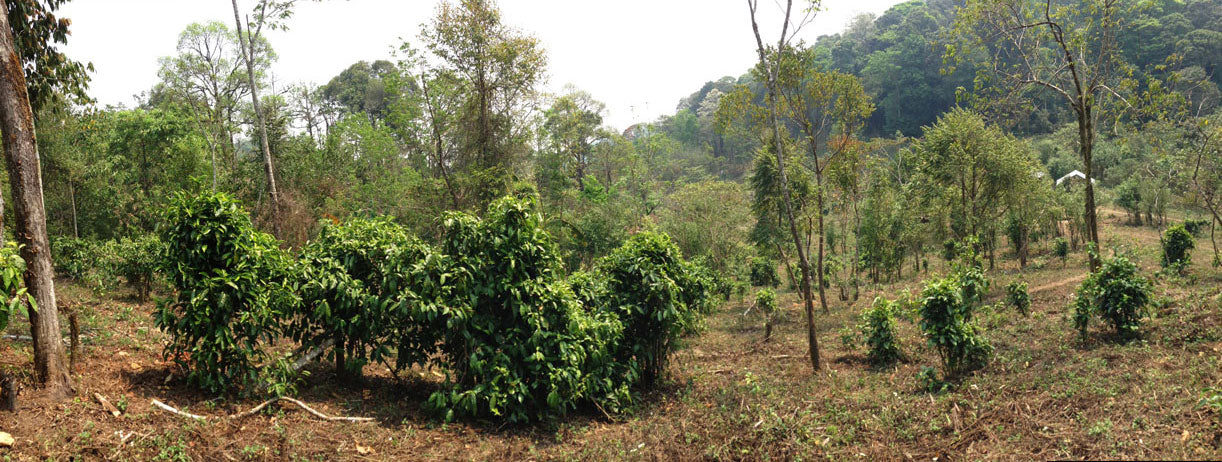
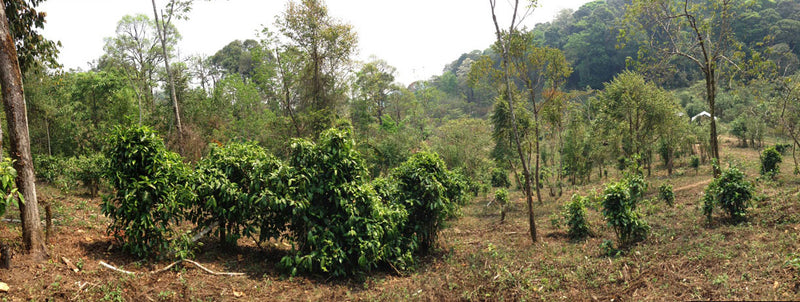
Tea History in Laos
Laos is home to a variety of tea regions and tea tree cultivars. Laos has historically cited a connection to the Pu’er tea market and the Ancient Tea & Horse Road that connected SE Asia to the traditional Silk Road trade routes that traverse Tibet, Bhutan and Central Asia.
Laos is one of the key growing regions for the Pu’er tea market and has so much potential for ecologically cultivated and organic premium teas. Laos is a land-locked country and one of the poorest nations in the world with a small population. Lack of labor for harvesting and insufficient logistics reinforces Laos’ farmers to focus on premium and artisan organic teas. This tea producing nation is not well poised to export or produce low or medium quality volume teas but has so much potential as a premium tea origin. Laos has an abundance of ancient cultivated and abandoned old growth tea areas to explore.
The French established a tea breeding and seed stock nursery in Northern Laos during their colonial occupation of Vietnam, Cambodia and Laos (Indochina). In the 1930’s the French were pressured by the British East India Company to divest from their planned expansion of tea cultivation and export from Indochina colonies. The French agreed to leave their tea plantations and tea trade in Laos as a condition for the British ending their naval blockade of key imports and fuel shipments to Indochina. These abandoned tea plantations in the north of Laos have become amazing forest tea resources of the highest potential. The one-hundred-year-old abandoned trees, the indigenous ancient teas and the new seed gardens from the original trees are all well established. We are proud to be an active participant with the local Lao people in the development and marketing of these very special teas from Laos.

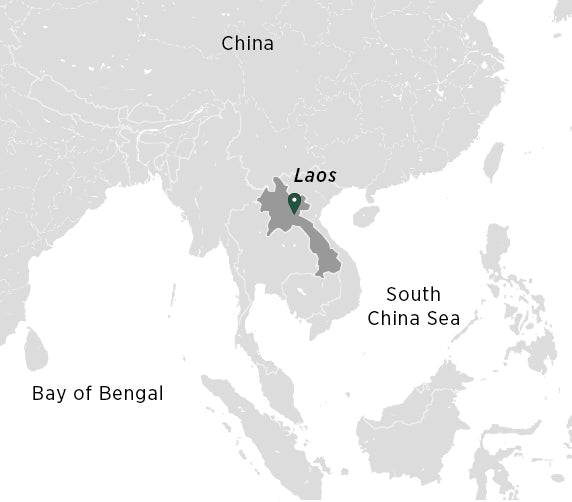
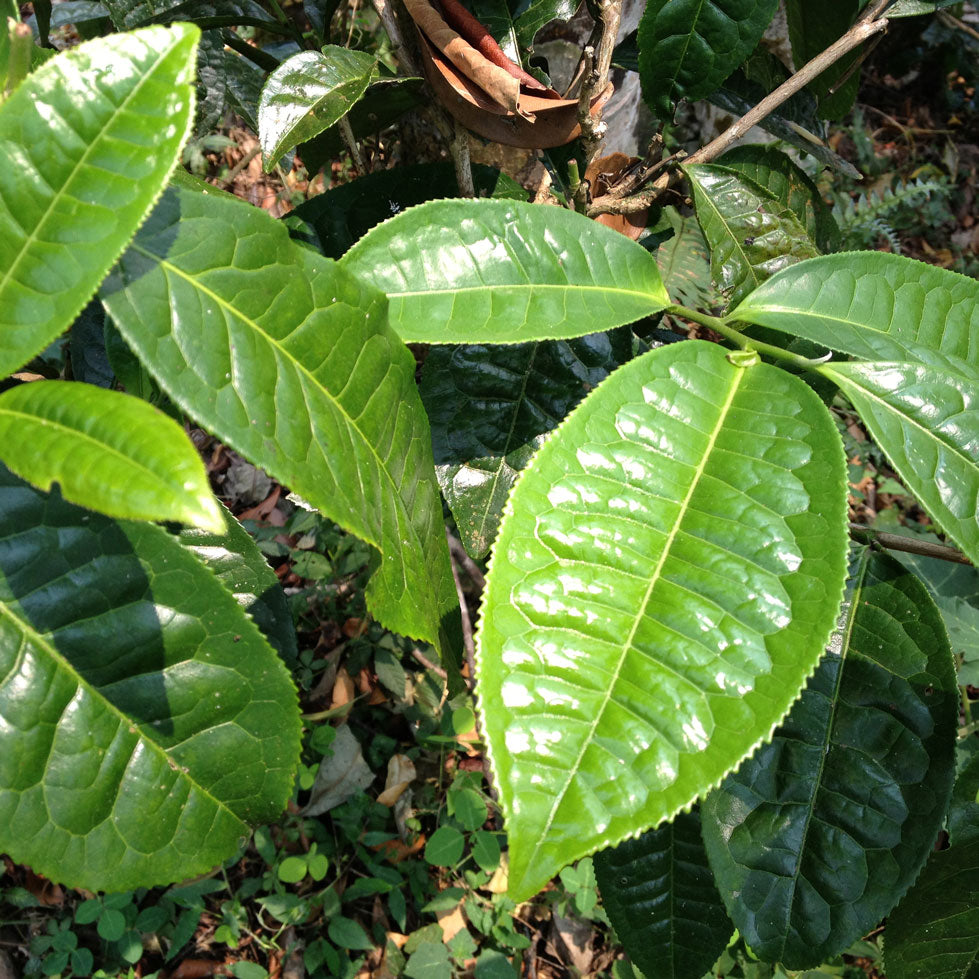
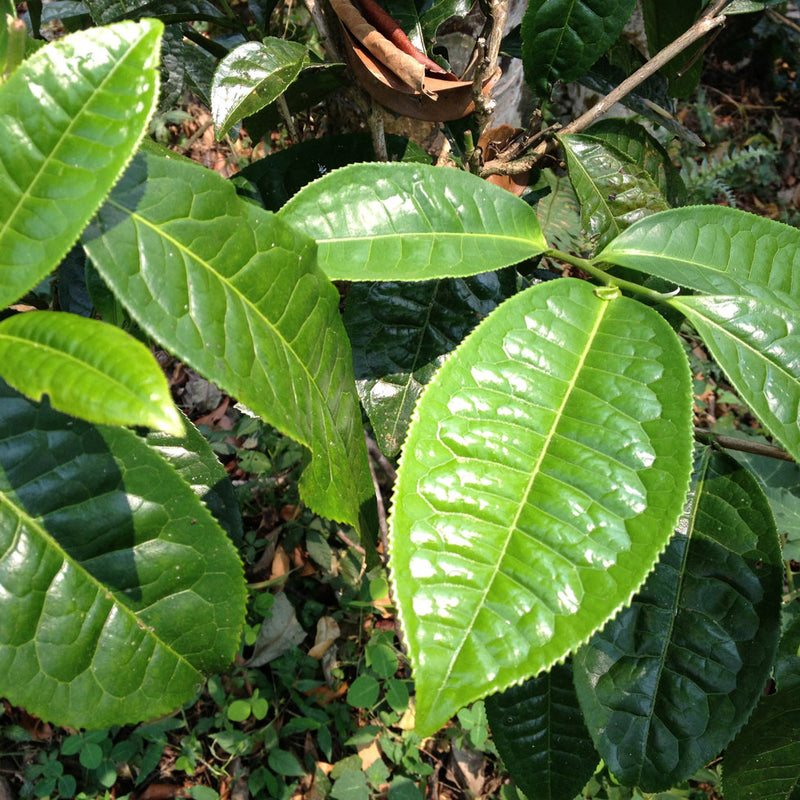
The sun-dried green tea base for making Pu’er (shaiqing mao cha) that is grown in Laos serves as the prime ingredient for some “Yiwu Pu’er”. Premium Pu’er tea brands import the tea from Laos to China in order to blend, press and market it within famous Pu’er factory brands as “Yunnan Pu’er Tea”.
Teas from Laos have been blended into Chinese Yunnan Pu’er teas for centuries. Sadly, Laos tea is rarely marketed on its single origin quality or merits of provenance. Although Laos ranks within the top 40 tea producers by annual production volumes, very little of the Laos’ tea harvest is wholly produced as a finished tea product or officially exported as a “product of Laos” to other countries. Laos has amazing tea resources. It is finally starting to gain some international awareness as a special tea producer, but this remote and very poor country remains largely a silent partner in the raw material supply chain of the famous Chinese Yunnan Pu’er tea companies.


In 2008 the Chinese Yunnan tea industry professionals lobbied and successfully achieved GI status (Geographical Indication) for Yunnan Pu’er Tea. GI is an internationally recognized standard for terroir-based foods like olive oil, wines, cheese and balsamic vinegar. GI recognition for Pu’er establishes an “official standard” that all “Pu’er Tea” can only be produced with tea leaves from Yunnan, China. Tea experts have fierce debates about this definition or product standard all the time and it is hard to deny that for centuries and before geopolitical borders, there was an ancient Pu’er tea trade that linked tea from all over SE Asia to Yunnan for final processing.
The countries bordering Yunnan, China have been producing shaiqing mao cha for the Pu’er tea market for centuries and the Pu’er raw-leaf trade routes pre-date the current map of political borders and modern GI marketing campaigns. Some of the most expensive teas from Laos, Myanmar, Thailand and Vietnam are sold off as Pu’er raw materials to China for the Chinese tea companies to blend and sell in their markets as “Yunnan Pu’er Tea”.
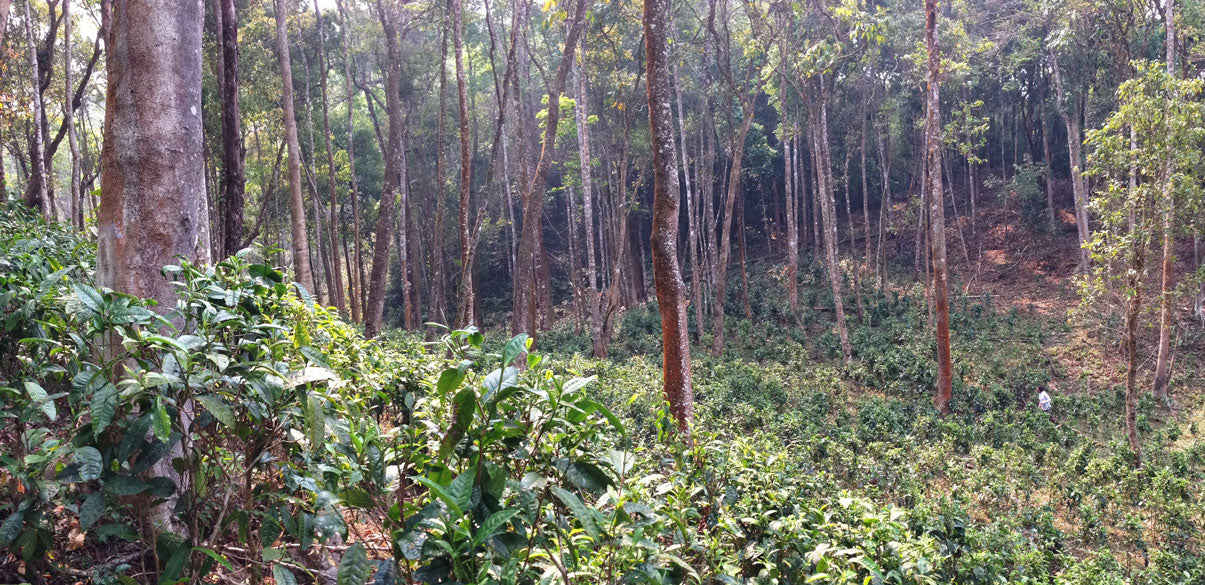

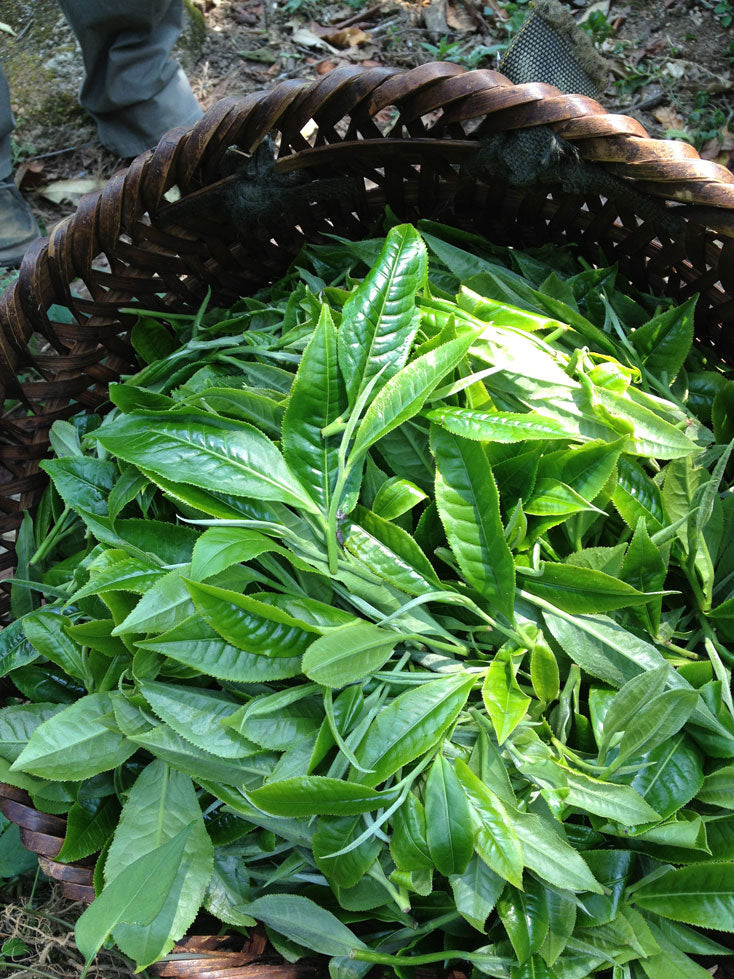

Most of the tea produced in Laos has the similar end market, which is the Chinese Pu’er tea market. We are direct trade importers with extensive and remote travels in these Pu’er producing regions bordering Yunnan, China. We want to introduce some of these excellent Pu’er teas from the border regions neighboring Yunnan. Our offering from Laos, Burma and Thailand will emphasize the un-blended, single origin uniqueness and the provenance of each area. We want to offer something different and interesting for Pu’er tea lovers to enjoy.
Over the years, we have focused on developing relations with small holders in Northern Laos to create Sheng Pu’er, Green tea, White tea and Red tea cakes as a finished and refined product made in Laos. In this way, our Laos tea partners can strive to add value to their teas and bring home higher incomes beyond what their past generations enjoyed as crude raw material farmers. We wish to share great tea produced entirely by our friends in Laos, from the mao cha processing to the steaming, stone pressing and final drying of the tea cakes. We will import on a garden direct basis from Laos producer groups to our website. The unique terroir of Laos forest tea gardens can be sensed and appreciated as a true product of Laos. The old growth forest tea gardens in Laos are a precious part of our tea journey and one of the most amazing sources of ecologically produced teas we have encountered.
Pu'er Tea Classification
Pu’er tea is the amazing manifestation of a grand tea category with cultural and agricultural links to the original geographical areas where the very first teas were harvested by humans in Yunnan, Burma, Thailand, Laos and Vietnam. Pu’er itself, is made from sun-dried green tea that is referred to as shaiqing mao cha. This sun-dried green tea is collected from all over Yunnan and the surrounding countries where special broad-leaf tea trees have been grown for centuries and, in fact, millennia. Pu’er tea brands collect batches of sun-dried teas from all over SE Asia and transport them to their factories in China to create their special blends of “Yunnan Pu’er” that are sold as GI protected agricultural products of China.
It is certain that many of the very best Pu’er teas are 100% made from Yunnan sun-dried tea but we also know that many top class Pu’er teas are made with leaves harvested from areas outside of Yunnan and China itself. We think it is time to differentiate the origins of Pu’er Tea and expand the awareness of the great Pu’er found in countries like Laos, Burma and Thailand. We are taking a different approach to our Pu’er offerings and communication. For more than two decades our founder has been traveling all over Yunnan and SE Asia developing connections to curate some unique Pu’er teas. Our offerings from Yunnan are purely made from Yunnan tea while our Laos teas, Burmese teas, Thai teas and Vietnamese teas are marketed as exclusively unblended and direct trade from their original countries of origin.
We are very excited to introduce Pu’er teas from Laos, Thailand and Burma in addition to Yunnan this year. In the coming months we will share some amazing journeys and sourcing missions that we have been working on for many years and are thrilled for you to taste these teas from remote regions.
